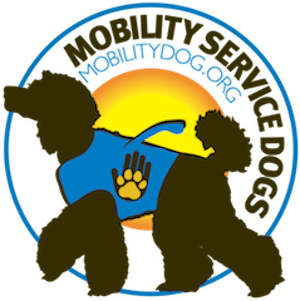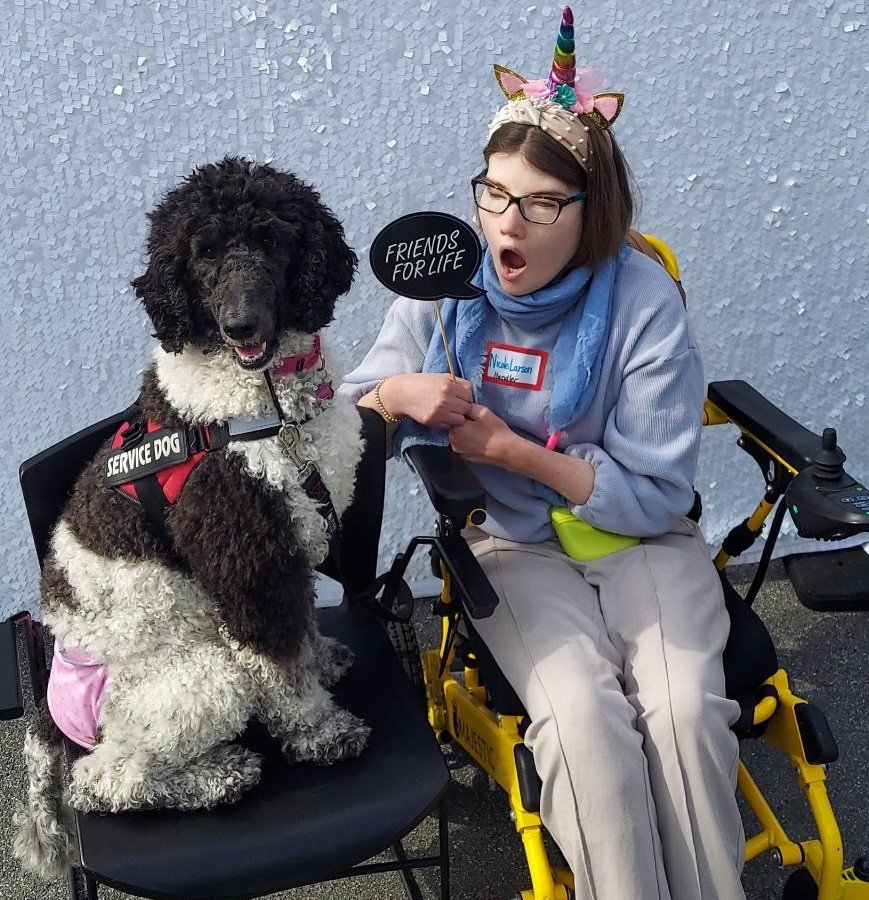Genuine Accessibility Is for Everyone and Everywhere!
Working Mobility Service Dog in a Grocery Store (Courtesy: MobilityDog.org)
In our increasingly interconnected world, accessibility cannot be limited to being just a buzzword. It's a fundamental principle ensuring everyone can fully participate in society, regardless of their abilities and physical accommodations. As the adage says, “It Takes a Village.”
Accessibility: Everywhere and Everyone
One of the most significant aspects of accessibility is its overall reach. Genuine accessibility is for everywhere and everyone and this requires considering diverse needs in various environments. (Source: ADA.gov)
Accessibility isn't a privilege; it's a right and must benefit those with disabilities and society as a whole.
(Article 9 of the Convention on the Rights of Persons with Disabilities)
When physical spaces are genuinely accessible, they become welcoming hubs for all individuals, irrespective of their challenges. Proactive accommodations not only enable people with disabilities to navigate independently but also foster a sense of inclusivity and belonging. It’s been said that a society's measure is often found in how it treats its most vulnerable members.
Accessibility: Attitudes and Behaviors
Moreover, accessibility also extends to fostering inclusive attitudes and behaviors. It's about recognizing and respecting all individuals' diverse abilities, experiences, and perspectives. Creating an inclusive culture involves:
Breaking down barriers.
Challenging stereotypes; and
Promoting empathy, understanding, kindness and respect.
Accessibility: Restaurants
Beckett, a Mobility Service Dog waiting outside a Restaurant (Courtesy: MobilityDog.org)
Restaurants play a vital role in fostering genuine accessibility by creating welcoming environments where everyone, including individuals with disabilities and those without, can dine and socialize comfortably.
Physical Accessibility: The restaurant must be accessible to everyone including those with impairments. This includes:
Wide doorways and ramps for wheelchairs and those with mobility issues.
Handicap-accessible parking spaces.
Designated seating areas with adequate space for maneuvering mobility devices.
The allowance of service dogs inside the restaurant.
Staff Training: All restaurant staff should receive comprehensive training on:
Disability awareness.
Proper etiquette; and
Best practices for serving customers with disabilities.
This includes understanding different types of disabilities, communicating respectfully, and offering assistance while respecting the customer's independence and preferences. These practices will genuinely foster a wonderful dining experience for all customers while ensuring individuals with disabilities also feel valued, respected, and welcomed.
Signage: Before entering the restaurant, a sign should clearly state their policy about service dogs. Federal law allows service dogs and their handlers full access to all public venues including restaurants. Posting a notice next to the entrance helps welcome those with service dogs while letting other potential patrons know service dogs are welcome inside the restaurant.
Service Dogs Welcome Here Window Decals (Available at MobilityDog.org)
Service Dog Accessibility: It Takes a Village
Janie, Bob and Beckett in Hawaii (Courtesy: MobilityDog.org)
When patronizing a restaurant that allows service dogs all diners are responsible for fostering a welcoming and inclusive environment. The following personal story is a great example of how crucial this is.
While visiting Maui, we went to one of our favorite restaurants. As we walked in, (my husband, Bob, my Service Dog Beckett, and myself), we were seated next to a very large family celebrating a special occasion. After we were seated, they began talking loudly about my service dog being inside the restaurant. It was apparent they wanted to get our attention about how they felt as someone in the group had a dog allergy. My husband went over to calmly talk to them and told them we would be happy to move to another table if that would make them more comfortable. They immediately responded with gratitude and graciousness that we were willing to accommodate their needs with kindness and understanding. When another table became available, we moved and everyone enjoyed a wonderful evening.
This situation could have turned out very differently if we did not show concern and empathy for the other diners. Since my husband acknowledged the situation and their concerns while offering a suggestion, everyone felt heard and respected.
Remember, everyone has the right to public access. Ignorance and an attitude of entitlement or power will only guarantee a disaster! The right approach can make all the difference and foster genuine accessibility for everyone.
“Service Dog Teams must act as Ambassadors and proactively foster accessibility for everyone everywhere!” (Janie Heinrich, Founder, MobilityDog.org)
Man with a Mobility Service Dog (Courtesy: MobilityDog.org)
Accessibility: An Ongoing Commitment
Accessibility is not a one-time endeavor; it's an ongoing commitment. As the world advances, our efforts to ensure accessibility for all must also evolve. Again, accessibility is for everywhere and everyone, including those who are disabled. It's about creating environments where everyone can fully participate, contribute, and thrive. By embracing accessibility, we empower individuals with disabilities and move closer to realizing the vision of a truly inclusive society. When we make the world more accessible, we make it better for everyone.
Learn How to be a Service Dog in Training (SDiT) Trainer AKA Puppy Raiser!







